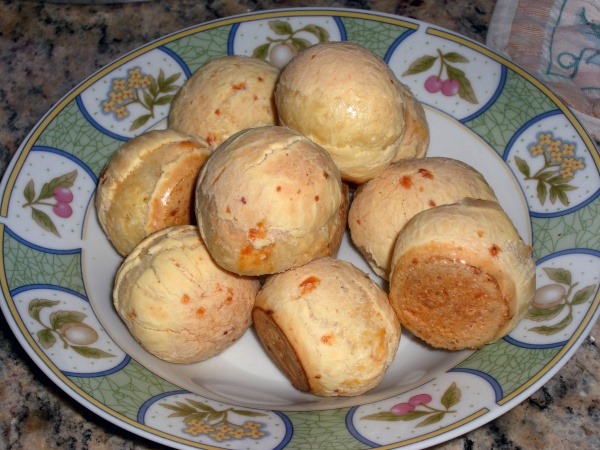Facts About Pão de queijo
Pão de queijo, or Brazilian cheese bread, is a beloved snack and breakfast staple in Brazil, particularly in the state of Minas Gerais. This traditional treat has somewhat hazy origins, but it’s believed to date back to the 18th century and really gained widespread popularity in the 1950s. The recipe traces its roots to African slaves who initially used cassava root to make bread rolls. Over time, milk and cheese were incorporated, giving us the cheesy delight we savor today.
The history of pão de queijo is intertwined with Brazil's mining era, a time when foods like beans, rice, corn, pork, and cheese were dietary staples. Due to the scarcity of wheat flour, cassava starch was utilized along with cheese to create this bread-like snack. The main ingredients include cassava starch, cheese, some form of fat (like lard, oil, butter, or margarine), eggs, and cheeses such as mozzarella, parmesan, or the local Minas cheese.
To make pão de queijo, the dough is rolled into small balls. These balls don’t require yeast to rise; instead, the dough's air pockets expand during baking, thanks to the elasticity of the starch paste. Because it’s made with tapioca starch, pão de queijo is naturally gluten-free. There are also delicious variations stuffed with fillings like catupiry (a creamy cheese), goiabada (a guava paste), or doce de leite (a caramel-like sweet).
In Brazil, this cheesy bread is a breakfast favorite and a popular snack, available in snack bars, bakeries, and supermarkets. You can even buy frozen versions to bake at home. Its popularity has crossed borders, making its way to the United States, where stores like Costco and Whole Foods stock frozen packages. Pão de queijo has also reached Japan and East Asia, where it’s often made with rice flour instead of cassava starch.
Whether enjoyed plain or with a tasty filling, pão de queijo is a delightful treat that has captivated taste buds both in Brazil and around the world.

 French Guiana
French Guiana